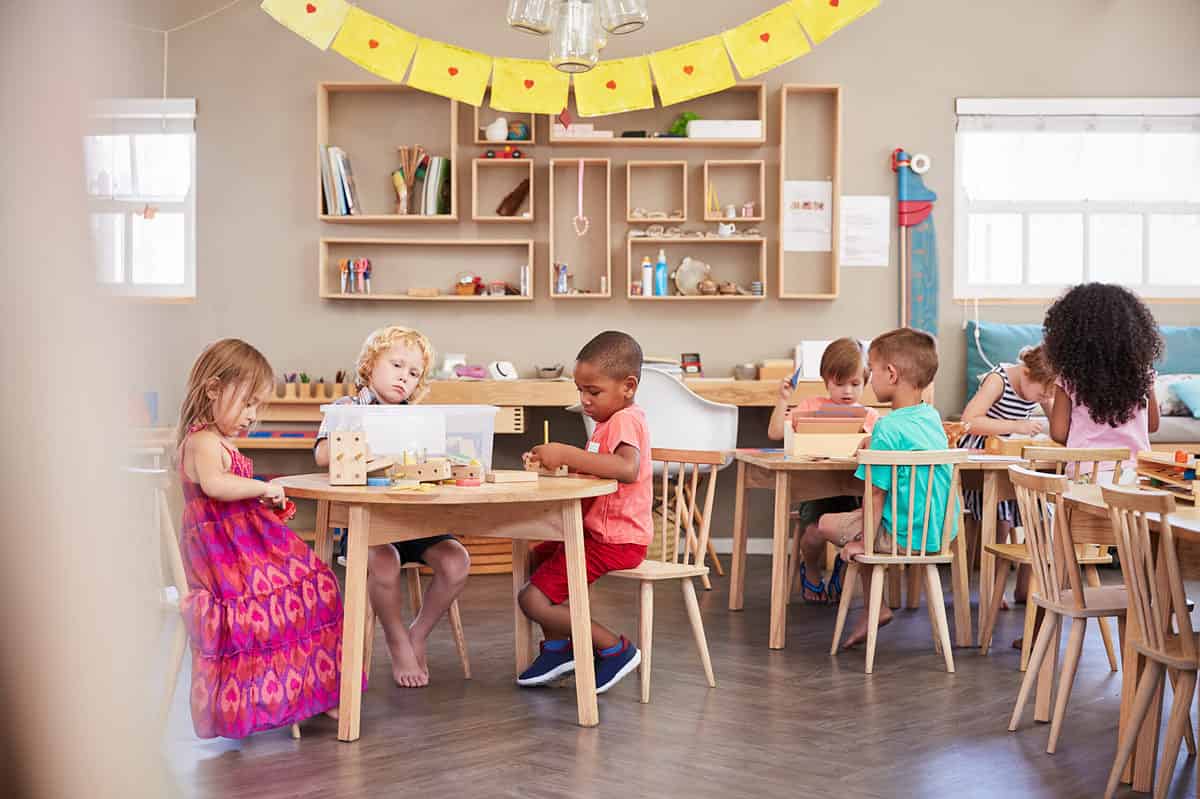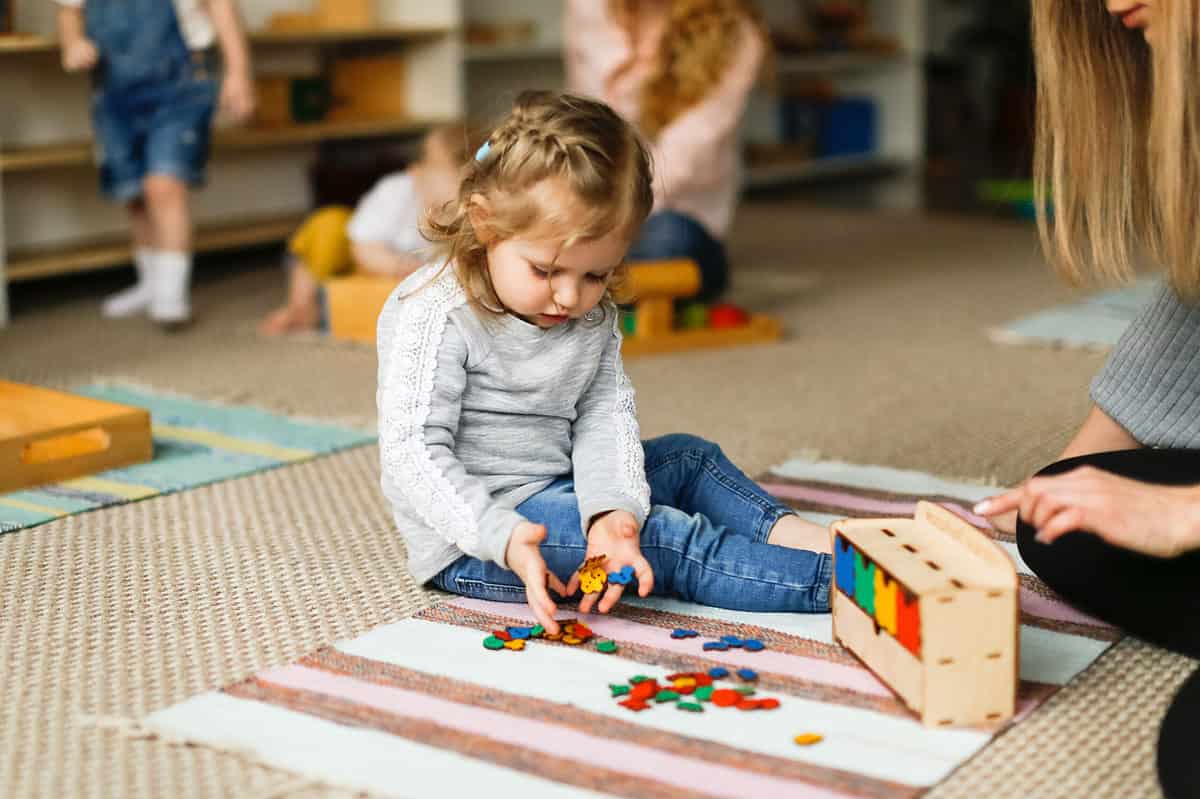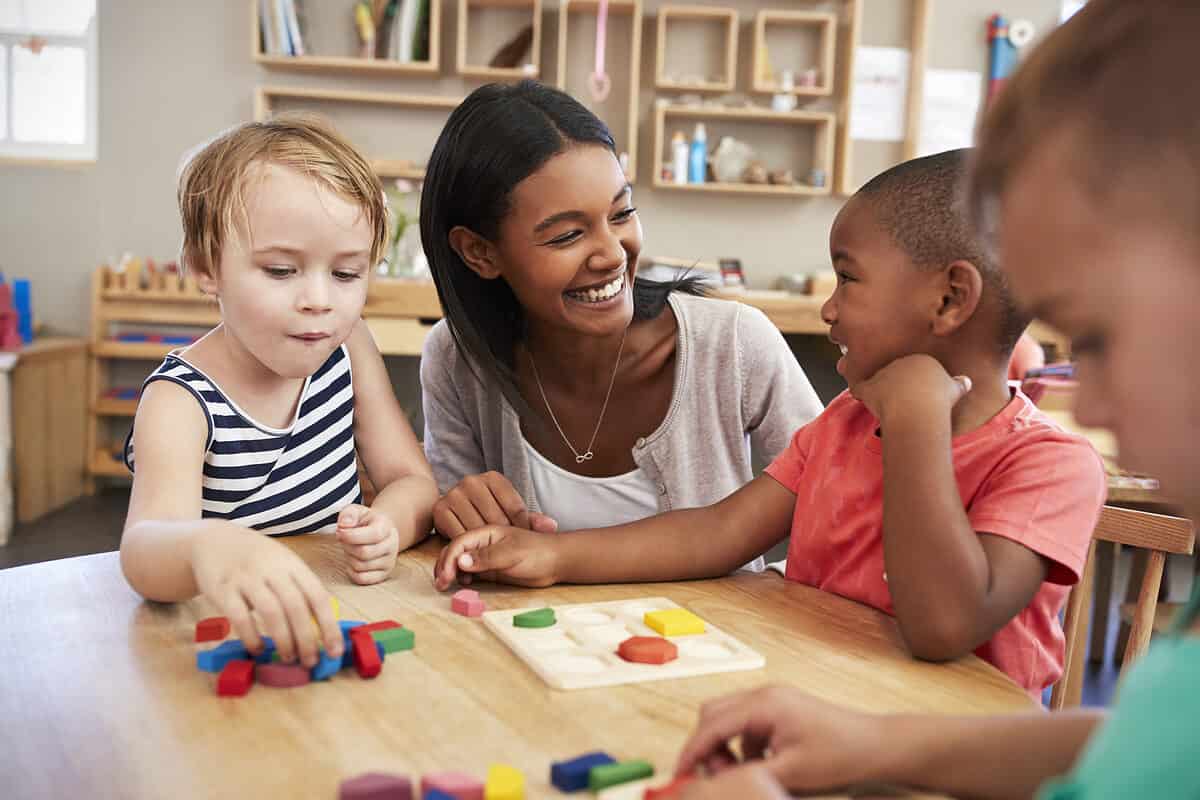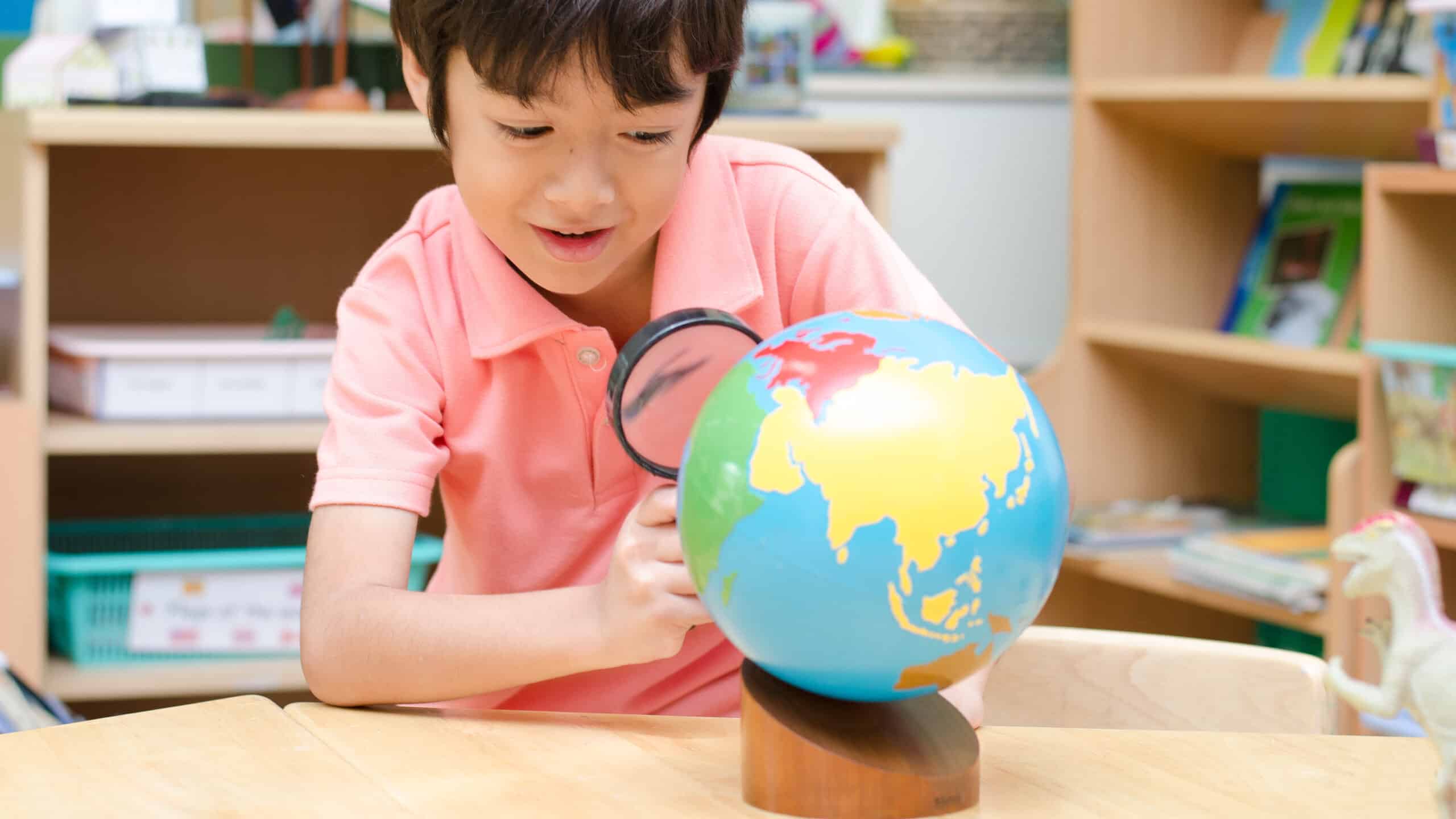As a parent in Arizona wanting to provide a solid foundation for your child, you understand the importance of a good education. There are numerous schools in Arizona, and it is impossible to visit each one to evaluate if they are a suitable fit for your child! We're going to look at Rainbow Montessori School in Arizona and provide essential information to help you narrow down your search for an excellent Montessori school.
What is Rainbow Montessori School?
Rainbow Montessori School, founded in 1980 by Doris Rasmussen, is a private Montessori school for students in Toddlers through Kindergarten. Rainbow's objective is to assist each individual in reaching their greatest potential and to equip students to be independent thinkers, life-long learners, and responsible citizens in an ever-changing world.
Rainbow is committed to Dr. Maria Montessori's philosophy, which emphasizes a child's need to learn basic academic skills, observe the environment, undertake autonomous work, and collaborate in a community.
Rainbow services the Scottsdale, Paradise Valley, Camelback Mountain, Pinnacle Peak, Carefree, McCormick, and Gainey Ranches areas of Arizona.

©Monkey Business Images/Shutterstock.com
Dr. Maria Montessori and the Montessori Approach
Dr. Maria Montessori (1870-1952) was one of the twentieth century's most influential early childhood educators. She was a pioneer in classroom practice and concepts that have had a global impact on the teaching of young children. Dr. Montessori bestowed a priceless gift on the children of the world: a new type of education.
Maria disobeyed practically every law of her society because she was headstrong and intelligent. She insisted on entering a boys' technical school to study math and science when she was 12 years old. Dr. Maria Montessori was the first woman to enroll in Medical School at the University of Rome to study math and science, and she went on to become the first Italian woman to graduate and become a doctor. She received numerous awards and scholarships, as well as the highest exam results in her class.
The Montessori Method
Dr. Montessori became interested in education while working as a doctor treating children with “special needs.” When she went on to start Montessori Schools in Rome for impoverished children of working parents, she addressed their education as a scientist. She made use of the classroom as her laboratory for watching children and figuring out how to help them reach their full potential. It soon became clear that Dr. Montessori had discovered a highly effective approach to teaching that could be utilized successfully with any child.
Montessori began traveling the world, building schools, training teachers in her methods, and lecturing on her discoveries.
Dr. Montessori published numerous books and essays until her death in The Netherlands in 1952, at the age of 81. Dr. Montessori offered the world a legacy of an educational technique that combines a philosophy of freedom and self-development for children with a practical approach.
Her “Children's Houses,” as she referred to her schools, provided a secure, well-planned, and structured setting for children to work in. She felt that if children are given the correct activities at the right stage of development by qualified teachers to monitor carefully and adapt to their particular needs, they will want to learn and will absorb knowledge without effort.
Vision
The school has a unique approach to teaching that capitalizes on young children's desire to learn about their surroundings. Later on in life, it satisfies older students' need to venture beyond the confines of their classrooms. They teach and remove barriers to learning.
For nearly four decades, the outcome has been graduates who are confident and poised self-starters with a broad grasp of subject matter and skills. These children have gained critical thinking skills, respect for one another and the environment, and a lifelong love of learning.
Rainbow Montessori School is a private educational institution that follows the Montessori method. Its foundation is on a balance of freedom and structure and is intentional about satisfying the developmental needs of the child. Rainbow Montessori School’s educational approach stresses and develops the potential of young children. It does this through a prepared environment, highly educated and certified Montessori instructors, and the use of Dr. Montessori's didactic materials.
Mission
The school's mission is to assist each child in:
- Self-respect and consideration for others
- Joy in constructive action
- Organization within oneself
- Self-control
- Self-assurance
- Academic abilities
- Independence
- Problem-solving

©LightField Studios/Shutterstock.com
In a small school setting, Rainbow Montessori School retains such a well-defined and experienced faculty. Its teaching faculty, which is among the best in the area, is at the core of the school. They are passionate and qualified professionals who are full of experience and continually push and inspire the students and one another.
All Directresses have diplomas from respectable governing bodies such as the American Montessori Society and Association Montessori International, in addition to their additional advanced training and experience.
Rainbow Montessori Programs
Rainbow Montessori School is dedicated to the development of responsible members of the community, as well as the preservation of a child's fragile spark of creativity and curiosity. Very young children are happiest when their living environment is predictable and consistent. They thrive on recognition of their uniqueness, acceptance, encouragement, external order, and routine.
The Montessori curriculum spiral has no end, and the depth to which any topic can be researched is only limited by a student's interest and abilities. At the same time, the school’s expectations are rather high. It challenges each student to reach their full individual potential, provides a clear standard of success, and encourages thought and work quality.
Its mission is to equip children for lives of personal fulfillment as responsible, caring global citizens. The school’s ultimate goal is to generate “renaissance” young people who know how to learn and have an openness to new possibilities and ideas. They also have a diverse range of interests, and an intrinsic joy of learning.
Toddler and Pre-Primary Programs
The first three years of a child's life are the most influential. Children receive numerous influences from their surroundings throughout this period as their inner growth happens.
- The Toddler and Pre-Primary programs are a loving socializing experience with a mission to help Toddlers up to 3 years old develop creativity, language, independence, and movement. The little ones see this as an extension of their home, where their parents are the primary educators. The program's focus is on the individual child inside a structured setting that is organized to satisfy the children's needs. The core principle of the school is to offer but not to indulge, to serve but not to restrict, and to enable freedom but not license.
- Teachers provide a constant routine in a secure, orderly atmosphere while working within a framework of individually established expectations depending on each child's abilities. The purpose is to help youngsters learn to communicate, collaborate, and master new experiences. Because each child is unique, the timing of developmental stages will vary slightly as they enthusiastically explore their surroundings.
- Children see each other's enjoyment and discovery in bright, open surroundings that develop into outdoor environments. There are manipulative exercises available, such as bead stringing and working with knobbed puzzles. Practical life materials made to fit a child's hands invite children to zip, button, dust, sweep, pour, and spoon. The little ones also like assembling in a circle for games, songs, and other exercises (line time), as well as work on computers. Sociability and toilet training are critical components of this age group.
Limits, flexibility, and exposure to real-life events in a supportive atmosphere are some of the most vital requirements for the thriving and growth of the little ones.

©Natalia Lebedinskaia/Shutterstock.com
Primary and Kindergarten
Life in Practice
Exercise in ordinary life skills helps greatly in the development of coordination, attention span, and the formation of ideas of logic and sequence, as well as the development of fine motor coordination.
Sensorial
These resources concentrate on each of the five senses. Sensory activities improve observation skills, expand descriptive vocabulary, teach classification, and help children apply this skill in their daily lives. Music, geography, and science are all sensorial investigations at the primary level.
- Music – Music teaches children about melodies and rhythms, as well as the common needs of humans. Children learn to discern tone variations in the classroom by using hand instruments and singing.
- Science – Science teaches students about the physical properties of plants and animals as well as their ecological habitats. The science program includes exercises to improve vocabulary and short experiments to help students understand basic physical science ideas.
- Geography – Children learn about the formation of land and sea forms. Language, fine motor coordination, and memory development are all aided by map work. Cultural studies place a premium emphasis on an appreciation of adversity, and our universal needs as human beings.
Language
Teachers urge students to vocally express themselves by formulating opinions, telling stories, explaining, and describing. To begin with, guides use a phonetic approach to teach reading. As children acquire confidence, their letter combinations get increasingly complex, in what is known as blending. Teachers place great emphasis on the manual abilities required for writing.
Art
Color, texture, and form awareness are developed through media and a variety of activities. Artwork aids in the development of fine motor control and communication abilities and is thus considered part of the school’s language work.
Mathematics
Children learn to identify quantities with numerical symbols. The decimal system is based on Dr. Montessori's incredibly versatile and enticing “golden bead” material. This subject offers the groundwork for learning basic arithmetic operations and encourages a true comprehension of the number system as a precursor to more abstract mathematical topics at the Elementary level.
Care Programs
Before and After School Care Programs (7:30 am to 8:30 am)
Rainbow Montessori School caters to families whose schedules necessitate an early start. Children in the Before School Care program participate in a variety of activities such as using computers, working from shelves, arts and crafts, sketching, and reading. The small class size is conducive to student/teacher interaction. The program's primary purpose is to offer care for the youngsters while also easing their transition into regular academic programs.
After-School Care Program (2:30 pm to 5:30 pm)
This extended curriculum extends Montessori ideals beyond the academic school day. The environment is familiar and welcoming, and the timetable is structured to incorporate periods of special projects, creative games, line time, storytime, arts and crafts, shelf work, and stimulating outdoor play. As the day comes to an end, guides (teachers) respond to children's needs with calm story times, shelf work, tabletop games, and extra individual attention.
Admissions
Rainbow Montessori School provides 2, 3, and 5-day programs with morning, afternoon, and all-day attendance choices. There is before and after-school care available, while summer school is available in a variety of formats to cater to the individual needs of each child.
Rainbow Montessori School welcomes children ranging in age from toddler to kindergarten. Licensed by The Arizona Department of Health Services, the school’s Montessori curriculum goes above and beyond what the Arizona Department of Education requires.
Students at the school are under the care of Montessori-certified teachers, with the following student-teacher ratios:
- Pre-primary: 1:8
- Toddlers: 1:4
- Primary: 1:10

©iStock.com/monkeybusinessimages
Schedule a Visit
All prospective parents and guardians are encouraged to organize a private tour of Rainbow Montessori School. They'll be able to get to know the school, ask questions, and experience the setting in which their children can discover their love of learning and the world around them.
Enrollment for qualifying students is based on existing admission rules, regardless of faith, religion, or race.
Application
Enrollment in Rainbow Montessori School is limited, and potential students are frequently waitlisted. To apply, fill out and return the Enrollment Application with the application fee. The school will contact you when there is an opening for your child and organize an after-school interview and orientation for you and your child once they have received the filled document, along with the application fee. Following this discussion, they will swiftly contact you to inform you of the status of your child's enrollment.
When you and your child attend the interview and orientation, you will receive an Admission Packet that includes the following items:
- Parent Guide
- Tuition Payment Contract
- Child Information Forms and General Releases
- Forms for immunization and/or waiver
When you have finished studying and filling in your packet as required, please return it to the admissions office. The state of Arizona requires that all forms must be on file prior to a child's first day of school.
Tuition and The School Calendar
• Current schedules will be accessible at the school office during your first visit.
Health and Safety
Rainbow Montessori School prioritizes the health and safety of the school community. All Head Teachers have received First Aid and CPR training, and all staff have been trained and are required to respond correctly in the event of a sudden sickness or accident.
- All primary doors on the Cactus and Voltaire campuses require an access code.
- Both campuses have security systems that provide alerts to the police and fire agencies.
- All school employees have had their FBI fingerprints checked and are registered with the state.
- Before entering school buildings, all visitors must be identified.
- All employees are given a well-documented procedures and policies manual.
- The Principal and Head Teachers attend monthly Health and Safety sessions.
- All safety policies, such as the Twin Ject, Epi-Pen, and so on, are in place.
Notable Montessori Alumni
The Montessori education has produced some notable alumni. Many athletes, celebrities, and entrepreneurs went through a Montessori education. Stephen Curry and Seth Curry, both NBA players, received a Montessori education as children.
Will Wright, the creator of the famous Sims video games series, received a Montessori education. Jeff Bezos, founder of Amazon, received a Montessori education, as did Larry Page and Sergey Brin, Google's founders. Another famous face you'll recognize among Montessori alumni is singer Taylor Swift.
Many sources have claimed that Beyoncé, Bill Gates, and Mark Zuckerberg received a Montessori education, but this has been contested in recent times. Either way, plenty of famous and successful individuals have received a Montessori education. By choosing to send your child to Rainbow Montessori, you are setting them up for great success in life.
Conclusion
Rainbow Montessori School's philosophy is one of respect and care for all children, and it is practiced in all classrooms by every member of staff. It has all the right measures in place to ensure that your child gains knowledge in a conducive environment. The school is popular for offering a welcoming, safe and secure home-away-from-home learning experience for little ones.
The image featured at the top of this post is ©Littlekidmoment/Shutterstock.com.
